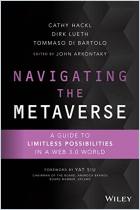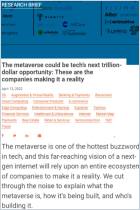Although coined in the 90s, the metaverse still hasn’t come to full fruition, though some avid Second Life users would beg to differ. What is a metaverse, really, and how is it distinct from the natural evolution of the internet? As humanity marches progressively closer to the metaverse, what shape will it take? Will corporations run it or will it be open and free? There are money-making opportunities there, but who will take them? Crypto experts Liz Harkavy, Eddy Lazzarin and Arianna Simpson try to answer some of these questions in this a16z article.
The metaverse could go one of two ways: It might be open, free, and decentralized, or it might end up being a closed virtual world that’s owned by corporations.
A virtual world built by a corporation will be tightly controlled. Corporations will hide data from view, only insiders will be able to contribute to code, and the corporation will extract rent from users and a high percentage of income from creators. Access will come only with permission, and social interactions will be mediated. The trajectory of the platform and its products will be decided at the top and passed down to all users, and the world will only be accessible using proprietary hardware.
A decentralized metaverse will be accessible through diverse hardware. The communities that build and maintain spaces will own them. Data will be transparent, and code will be open source. The user base will decide the trajectory of the metaverse and its products. A true metaverse requires seven essential ingredients...
Liz Harkavy, Eddy Lazzarin and Arianna Simpson are professionals with a16z crypto, a venture capital fund focused on web3 start-ups and crypto investments.


















Comment on this summary or Start Discussion